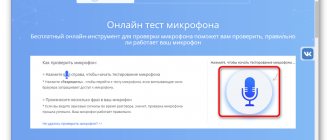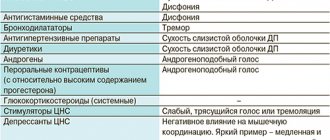4.7
Average rating: 4.7
Total ratings received: 73.
4.7
Average rating: 4.7
Total ratings received: 73.
Intonation is the rhythmic and melodic aspect of speech, which serves as a means of expressing syntactic meanings and emotional coloring. This phonetic means of linguistic expressiveness allows you to express the mood of the speaker and his attitude towards his own statement.
Place of intonation in speech
Intonation plays an important role in the spoken form of language. Intonation distinguishes the oral form from the written form by its expressiveness and uniqueness.
In written speech, intonation is conveyed using punctuation marks.
With the help of intonation, a person can express specific emotions and also influence the listener.
In many ways, intonation characterizes the speaker himself. With the help of intonation in various communication situations, you can determine the speaker’s attitude to the statement and indicate his mood.
The same expression can be pronounced in different ways using intonation: with a mood of sadness, joy, dissatisfaction, etc.
What kind of cross-cutting verbal actions can there be?
- influence the imagination of listeners (F. Tyutchev “I love thunderstorms...” - I want to paint a picture of a May thunderstorm not terrible, but joyful);
- influence feelings (I want to express a sense of admiration for Ostap’s courage during the execution);
- influence the consciousness of the listeners (I want them to understand the main idea of the text or fragment (I want to show that Gerasim from “Mumu” returns home not as a serf, an obedient slave in everything, but as a free man; it is not for nothing that Turgenev compares his gait to a lion).
For the implementation of purposeful verbal action, vivid visions and associations are crucial.
Seeing a living image or picture behind the author’s words is not easy for a student; teaching this is the teacher’s task. (Imagine a prisoner in a dungeon; clouds “like a chain of pearls” rushing across the sky; thunder, “as if frolicking and playing, rumbles in the blue sky,” etc.).
- After expressive reading, the teacher can give the students a task: answer in writing the question “What kind of autumn does A.S. like?” Pushkin? (As a rule, everyone writes about the beauty of early autumn).
- Before re-reading, ask the question: “What pictures of autumn do you imagine, see with your inner vision?” These visual images will be more concrete the more vividly the reader draws them in his imagination.
- After the second reading of the poem, students once again turn to the question asked and edit what they have written.
Types of intonation
There are several typologies of intonation:
- depending on the emotional coloring - exclamatory intonation (raising and lowering the tone) or non-exclamatory (calm pronunciation);
- depending on the form of the statement - the intonation of completeness (completeness of the statement) or incompleteness (unfinished thought);
- depending on the function of the utterance - the intonation of the message, motivation or question;
- depending on the syntactic relationships between the parts of the utterance - intonation of enumeration, comparison, explanation, etc.
Basic elements of intonation
We have already begun to talk about ways to implement various types and functions of intonation, when we looked at the types of intonation. As you understand, this or that effect can be achieved by adjusting one or another element of intonation. Next, we will continue the topic of intonation structures and consider its individual elements.
Pitch or tone of sound (higher-lower)
So, narrative speech is characterized by an even and calm pronunciation of words and phrases. The speech flows smoothly, the voice sometimes rises a little, sometimes decreases slightly, but the overall impression of such speech is even.
This is quite enough if you are explaining some material for 5 minutes and do not want listeners to be distracted from the essence by emotions or something else. Among the shortcomings, we note the following: in this way of presentation it is impossible to hold attention for a long time . Therefore, the structure and essence of the message must be thought through thoroughly in order to understand how to catch and hold the attention of the audience.
Interrogative fragments of speech are characterized by a rising tone of voice at the beginning and a lower pitch towards the end of the question. For exclamations, everything is exactly the opposite: the tone rises closer to the end of the phrase. If a question or exclamation is inserted between semantic fragments of speech, you can hold the audience’s attention almost indefinitely . More precisely, before the bell rings from a lesson or lecture, because... At conferences and other events, reports longer than 30 minutes have not been practiced for a long time.
Therefore, if you learn to control intonation and hold the audience’s attention for half an hour, consider that you have mastered this topic. We anticipate a question about the now fashionable online streams, which, as a rule, last significantly longer than an hour.
We answer: there are always breaks for communication with the online audience, sound check, request for feedback “How do you hear?” and “As you can see?”, answers to questions, both asked by the audience to the presenter, and asked by the presenter for the audience.
So the core of the report fits into the same half hour, which, of course, must be worked out, rehearsed, or at least well thought out. Then, if you have already mastered voice production, this will be enough for a successful stream. In general, you understand that we need both a high and a low voice .
Tempo (faster-slower)
For each type and type of intonation, each type and function of intonation, it is important to choose an adequate rate . Students will not understand the teacher if he takes a smooth narrative tone without jumping up and down, but starts speaking very quickly. And if the speech is too slow, they will fall asleep altogether.
Hamlet's "To be or to be" soliloquy should be neither too fast nor too slow. The audience should be given the opportunity to think, but should not be allowed to lose the thread of the plot.
The ceremonial speech on the occasion of the anniversary should be measured, and the speech of the newscaster should be fast and clear. The announcement “A boy is lost, please find him, please contact the help desk” is pronounced quickly and clearly, but an educational conversation with the found boy and the question “Why don’t you listen to your grandmother?” It’s better to arrange it with feeling, sense, and arrangement.
You can give hundreds of examples from life when a correctly selected speech tempo enhances the intonation and meaning of the message. Therefore, it is important to learn to speak beautifully both at a fast and slow pace .
Functions
Voice intonation is a set of speech objects. They combine, alternate and change as necessary. The more diverse the speech, the more informative it is - artificial phrases are used that enhance the manner of speech.
Intonation is necessary for:
separation of phrases or dialogue;
- to separate information and make it clearer;
- used to create the correct structure (in the design of phrases of all types);
- to describe emotions and the general message;
- to separate lexical elements in a phrase.
A certain manner of speech is used for the modality of the text. It helps to build the narrative in the correct form and not get lost in meaningless text.
In speech, you can do without intonation, but with its help it is easier to make the necessary accents: this is useful for artistic speech, for conducting a constructive dialogue. If you do not use intonation, it is difficult to avoid mistakes in communicating with your interlocutor.
Exercises:
1. Intonation of the end of the sentence (.) – voice down; intonation of an interrogative sentence (?) – voice up; intonation of an exclamatory sentence (!) – voice up. 2. Homogeneous members of the sentence: logical stress falls on each member of the sentence, after each member of the sentence there is a pause. (The naughty Monkey, / Donkey, / Goat / and the club-footed Bear / started to play a quartet.) 3. Intonation of emphasis - / pause, voice up, pause /. (The sea, / lazily sighing near the shore, / fell asleep and motionless in the distance.) Used for isolation. 4. Intonation of opposition . The first part of the sentence is a voice up, a long pause, towards the end of the second part the voice goes down. (The rank followed him - he suddenly left the service.) The contrast between the two parts is achieved by logical emphasis on antonyms. (If you like to ride, you also like to carry a sled.) 5. Introductory words and sentences - accelerated reading of the entire sentence. 6. Appeal: 1) at the beginning of the sentence: logical stress and pause (My friends, / our union is wonderful!); 2) in the middle of the sentence - logical stress, pause after address (Don’t make noise, rye, / with a ripe ear.); 3) at the end of the sentence - a pause before the address, logical stress (What do you want, / older?). 7. Intonation of explanation is used where there is a “colon” sign: in a complex non-union sentence, towards the end of the first sentence the voice decreases, there is a long pause.
Intonation can be graphically represented using punctuation diagrams. For example, intonation pattern when addressing; ABOUT, /….
Before learning punctuation marks in sentences, students must be taught correct intonation.
Our speech is always divided by stops (pauses) into groups of words connected by thought - these are speech links, and the pauses between them are logical pauses.
Speech units usually define punctuation marks, but not always.
- Logical pauses separate the subject group from the predicate. (A sour and very healthy cranberry / grows in swamps.)
- Logical pause - before connecting conjunctions and, or, yes (and) - even if there is no comma. (Sour/and very healthy cranberry.)
- After the period there is always a long pause.
- Logical pauses - with reverse word order, inversion. (Pleasant to me / is your farewell beauty. //)
An incorrectly made logical pause distorts the meaning of what is read and destroys the aesthetic impression. (Children of primary school can read this: “... She came, / crumbled, in clumps /, hung on the branches of oak trees.”) A logical pause brings order to the reader’s speech, teaches him to control himself and, slowly, move from one speech unit to to another.
Stages of effective analysis of a poem or text fragment
- Comprehensive familiarization with the content of the text, comprehension of the author's intention: – expressive reading by the teacher of the text ( no assignments before the first reading! ); – independent reading of students, identification of individual events and parts of the text (title or quotation plan); – creating a chain of visions and associations associated with the aesthetic perception of the content of the text (working with key concepts, questions on text analysis, working with figurative means of language); – clarification of the main thought, idea of the work.
- Formulating the main purpose of reading, a cross-cutting action for the entire text.
- Performing task for each part of the text. – Analysis of the text, result of the analysis: the main idea – A.S. Pushkin loves both early autumn, the time of farewell beauty, when “the forests are dressed in crimson and gold,” and late autumn, when “a rare ray of sunshine” flashes, when “threats distant from the gray winter are felt” in nature. (You can write this text as a sample with partial citation, which is used in literary analysis of works). – The main purpose of reading, the cross-cutting action, is to convey the author’s love for both early and late autumn. – Performing task for each part: the first part is admiration for early autumn, the second part is slight sadness. – Intonation (mark).
Important properties
The linguistic terms of intonation are associated with the demonstration of emotions through the creation of certain structures. The melody conveys joy, hatred, sympathy. This style does not have an exact meaning, but there are basic motives. Rhythmic-melodic intonation can convey a person’s character, his behavior, and motives. Melody is a means of expressing a sensual tone that is difficult to describe in words.
Correct accents
The most important part of manner is emphasis. It can show the semantic message of a statement. The accent serves to highlight individual words and their correct interpretation. The correct accent is logical and syntagmatic.
Tactic emphasis distinguishes individual parts of the structure from the speech stream. Meaningful groups increase overall meaning. Logical accents reinforce only important words, for the sake of which the entire speech is structured. In the intonation type of phrase, additional pauses are used after the accent.










